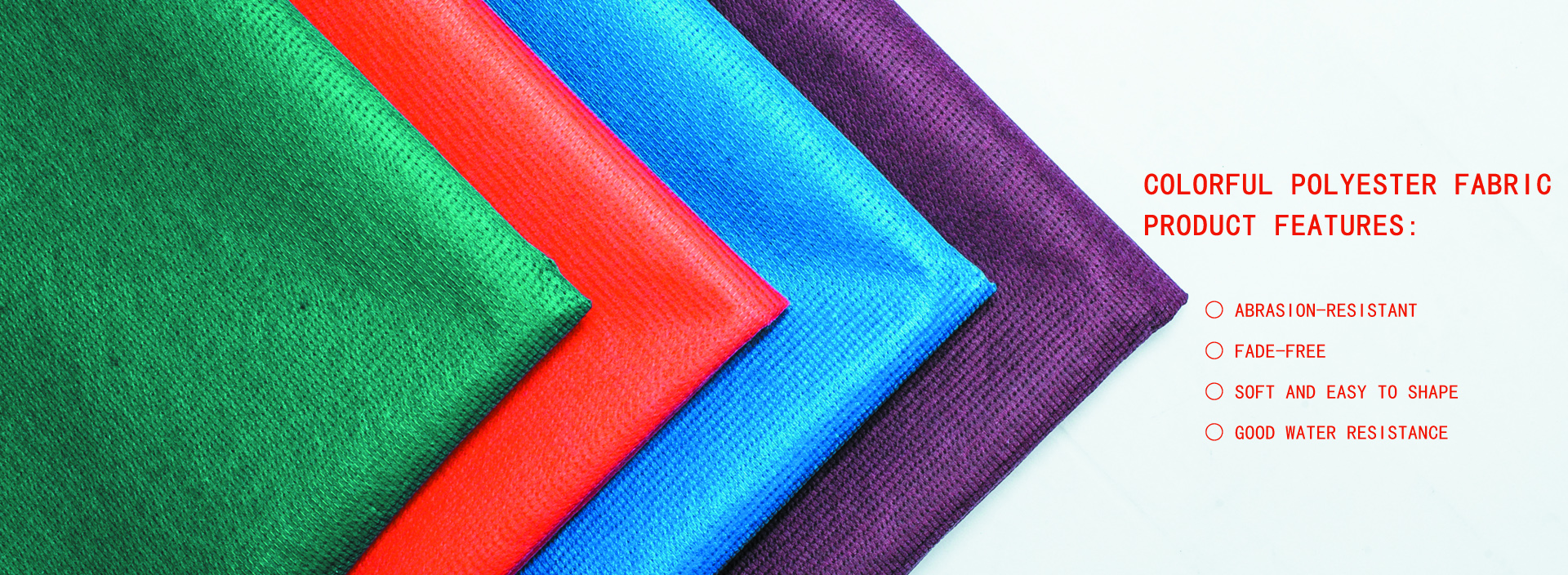
Bentonite has the expansion of the water characteristics. General calcium base bentonite expands, its expansion is only about 3 times their own size; And sodium base bentonite adsorption 5 times its own weight of water in case of water, Volume expansion to the original 15 to 17 times above; Lock sodium base bentonite in the middle of the two layers of geosynthetic materials, protecting and strengthening the role of, Make the GCL has a certain overall shear strength.
GCL swelling waterproof blanket is an anti-leakage geosynthetic material.
It is specially used for artificial lake waterscape, landfills, underground garages, roof gardens, pools, oil depots and chemical storage yards. The high-expansion sodium-based bentonite is filled between the special composite geotextile and the non-woven fabric. The bentonite impermeable pad made by needle punching can form many small fiber spaces, so that the bentonite particles cannot flow in one direction. When water is in the pad, a uniform and high-density colloidal waterproof layer is formed to effectively prevent water leakage.
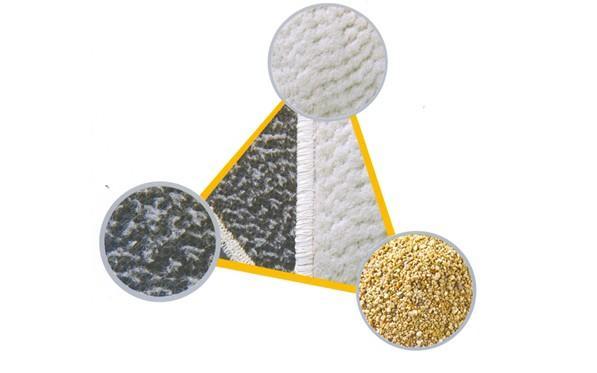
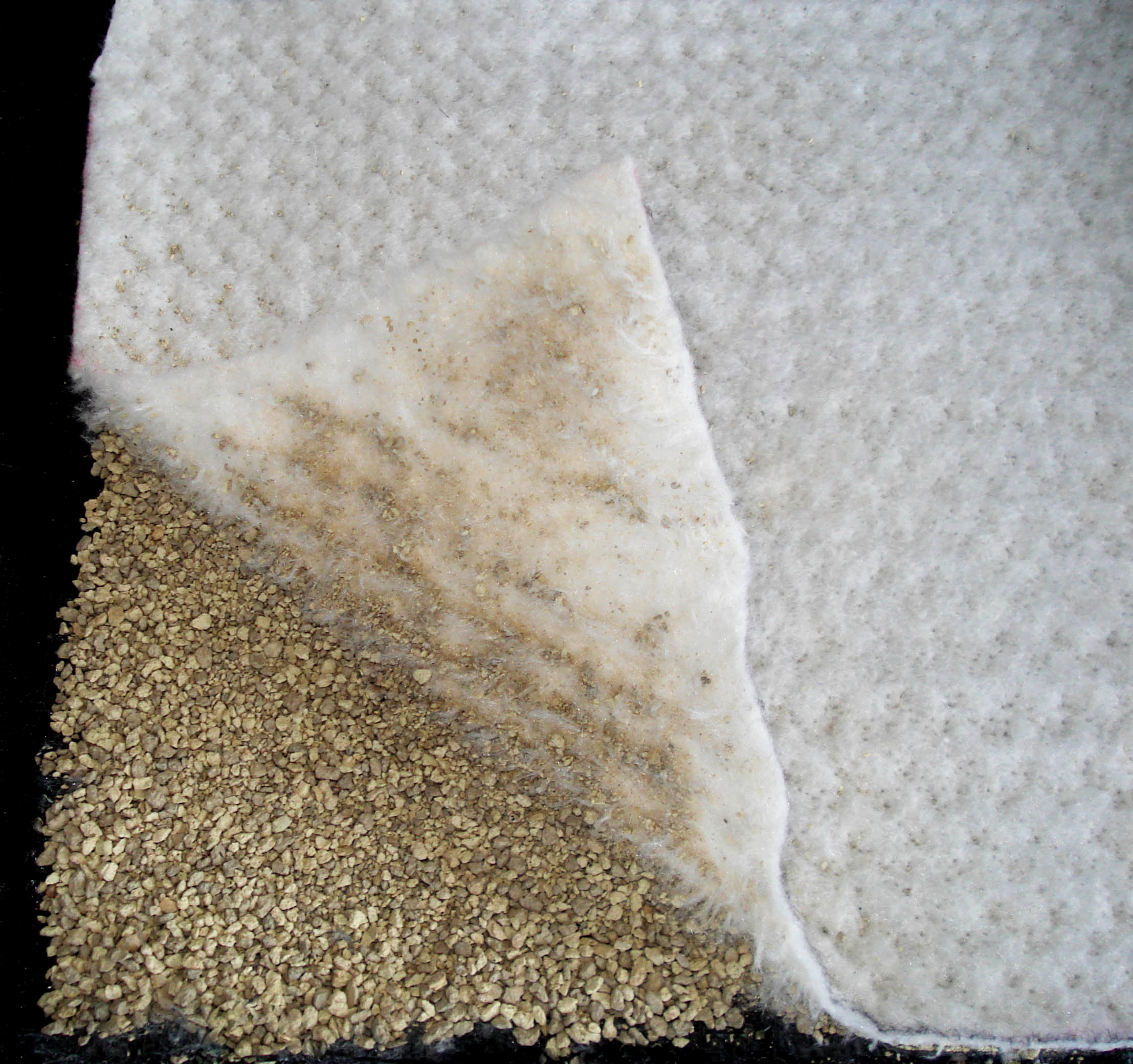
Featuresedit
1. Compactness: Na-based bentonite forms a high-density diaphragm under water pressure. When the thickness is about 3mm, its water permeability is less than &×10ˉ11m/sec, which is equivalent to 100 times the compactness of 30cm thick clay, which is very strong. The self-retaining water performance.
2. It has permanent waterproof performance: because sodium bentonite is a natural inorganic material, even after a long time or the surrounding environment changes, it will not be aging or corroded, so the waterproof performance is long-lasting.
3. Simple construction and short construction period: Compared with other waterproof materials, the construction is relatively simple and does not require heating and pasting. Just use bentonite powder, nails, washers, etc. to connect and fix. No special inspection is required after construction, and it is easy to repair if waterproof defects are found. GCL is the shortest construction period among the existing waterproof materials.
4. Unaffected by temperature: it will not be brittle under cold weather conditions.
5. Integration of waterproof materials and objects: Sodium bentonite has 20-28 times the expansion capacity when it meets with water. Even if the concrete structure vibrates and settles, the bentonite in GCL can repair cracks on the concrete surface within 2mm.
6. Green and environmental protection: Bentonite is a natural inorganic material, which is harmless and non-toxic to the human body, has no special impact on the environment, and has good environmental performance.
Features:
The cost performance is high, and the application is very wide. The product range can reach 6 meters, which greatly improves the construction efficiency.
The scope of application and application conditions are applicable to municipal (landfill), water conservancy, environmental protection, artificial lake and building underground waterproofing and anti-seepage projects.
It can still be constructed at negative temperature (-20℃) where traditional waterproof materials cannot be constructed; it can also be constructed on a damp base (but no clear water); it cannot be constructed in rain or snow; it is not suitable for strong acid and strong alkaline solutions Anti-seepage; because bentonite is an inorganic material, its durability is better than that of organic waterproof materials.
technical parameter:
Bentonite expansion coefficient (ml/2g) ≥ 24;
GCL unit area mass (g/m2) ≥4500;
GCL longitudinal breaking strength (KN/m)≥10;
GCL transverse fracture strength (KN/m)≥10;
GCL longitudinal elongation at break (%)≤10;
GCL transverse elongation at break (%)≤6;
GCL vertical permeability coefficient (cm/s)≤5×10-9;
GCL peel strength (N)≥65; GCL hydrostatic pressure test (0.5Mp) has no leakage for 24 hours.
Construction method:
1. The bentonite waterproof blanket material has a large dead weight, so it should be transported and laid by a shovel conveyor.
2. The bentonite waterproof blanket material is connected by lap joint.
3. When laying the bentonite waterproof blanket on a slope greater than 10%, the number of overlaps along the length of the slope should be minimized. The bentonite pad on the slope must exceed the foot line of the slope by more than 1500mm. D. We will strictly follow the bentonite waterproof blanket laying design drawings submitted to the supervising engineer, unless required by the owner or supervisor.
4. Any equipment used to lay the bentonite waterproof blanket cannot be driven on the already laid geosynthetic material. When installing the bentonite waterproof blanket, the outdoor air temperature cannot be lower than 0°C or higher than 40°C.
5. The edges of all exposed bentonite waterproof blankets must be immediately pressed with sandbags or other heavy objects to prevent the bentonite waterproof blanket from being blown by the wind or being pulled out of the surrounding anchoring ditch. The bentonite waterproof blanket cannot be deployed in windy weather to prevent it from being blown up by the wind.
6. The laying method of the bentonite waterproof blanket must ensure that the bentonite waterproof blanket is in direct contact with the underlying foundation to eliminate wrinkles. Any wrinkles, folds or arches may cause the same situation with other geomaterials in the soil layer. In order to avoid wrinkles, folds and arches, we will re-lay or cut the bentonite waterproof blanket according to the requirements of the technical description. And patching to eliminate these problems.
7. The bentonite waterproof blanket equipment must be approved by the supervision engineer before it can be used. Unprotected razors or "quick knives" are not allowed. I. The construction equipment that may damage the bentonite carpet cannot directly act on the bentonite carpet. A feasible laying method is to move the bulldozer backwards and spread the bentonite blanket on the front end of the bulldozer. If the earth machine leaves a car mark on the foundation soil, it should be restored to its original state before the paving work continues.
8. When laying the bentonite blanket, minimize the drag of the bentonite blanket on the foundation to avoid damage to the contact surface of the bentonite blanket and the ground. If necessary, a temporary geotextile can be placed on the ground to reduce the damage caused by friction during laying of the bentonite blanket.
9. The laying and overlapping of the bentonite blanket should be parallel to the direction of the slope. If the slope is greater than 4:1, the bentonite blanket should not be horizontally overlapped within 1m from the top of the slope or the slope. 5. Overlap a. The overlapping method of bentonite blanket is to overlap the ends of two bentonite blankets. Prevent soft soil or gravel from entering the overlap area.
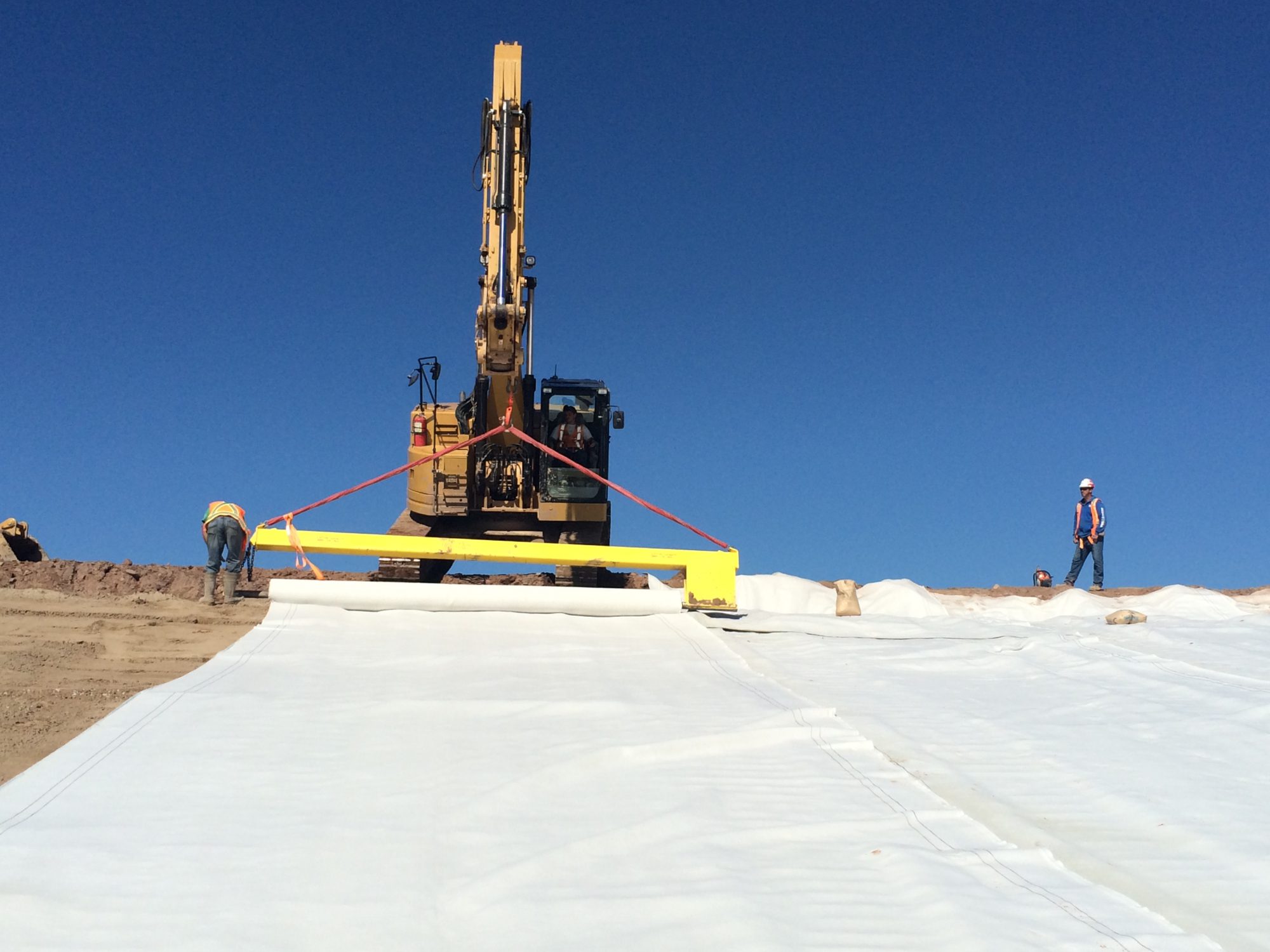
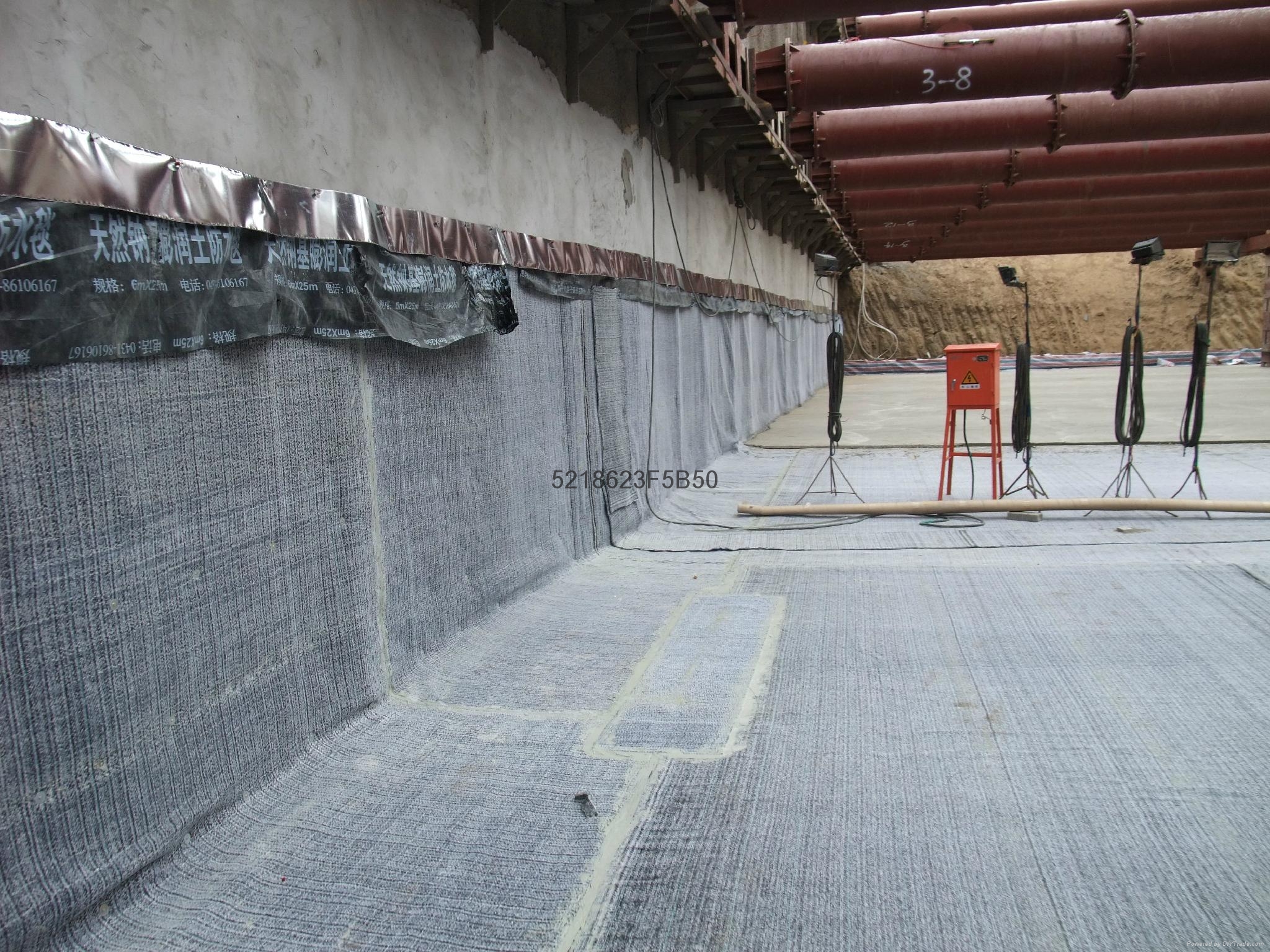
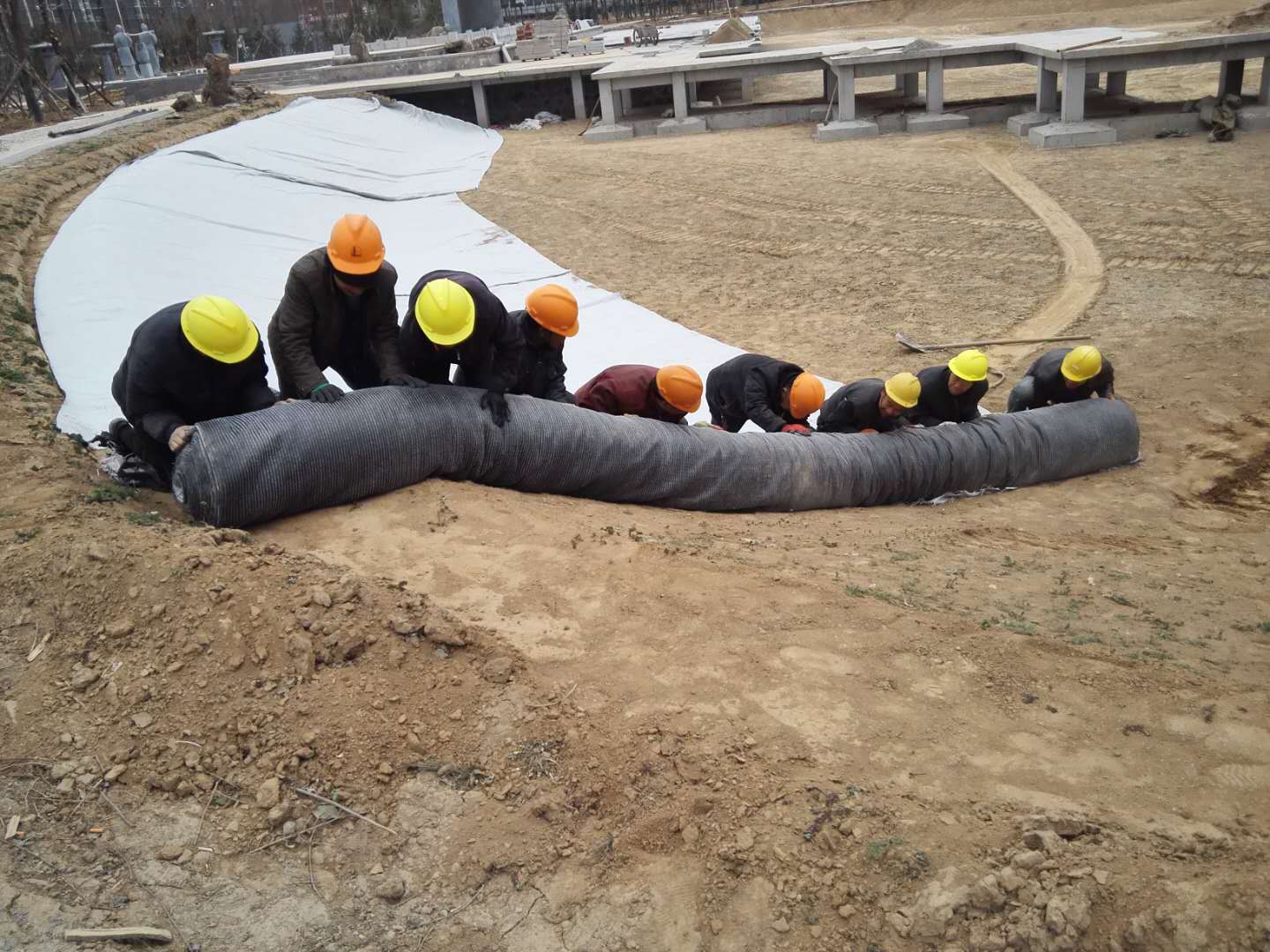
bentonite clay blankets,Property of sodium bentonite Geosynthetic clay Liner Geosynthetic Clay Layer for Riverbank and landfill projects: I. Swell when meeting water 2. Long-time waterproofing and friendly to the environment 3. Separation, reinforcement, protection, filtration and easy for construction
Geosynthetic clay liner is composed of high dilatability of sodium base bentonite filling between the special composite geotextile and nonwoven fabric, made by the method of acupuncture or suture composite impervious material.
Geosythetic sodium bentonite clay 1. Its performance price ratio is high. Its uses is very extensive. The width of product can reach 6 meters, which greatly improves the construction efficiency. Geosynthetic Clay Liner Geosythetic sodium bentonite clay 2. The products are applicable to municipal (landfill), water conservancy, environmental protection, artificial lakes and underground waterproofing and seepage prevention works of buildings. Geosynthetic Clay Liner 3. It can still be constructed under negative temperature (-20), it can also be constructed on damp base (but not bright water);but it can not be constructed under rain or snow. 4. Because bentonite is inorganic material, its durability is more better than organic waterproof material. Geosythetic sodium bentonite clay
Introduction of Bentonite Waterproof bentonite blankets (GCL),GCL is a kind of impervious liner between CCL (on-site thick compacted clay impervious liner) and polymer material --- geo-membrane. It is mainly used in waste landfills, groundwater reservoirs, underground infrastructure construction and other projects in environmental engineering to solve the problems of sealing, isolation, and anti-leakage.
astm standard sodium bentonite GCLs geosynthetic clay liner Supply Ability 100000 Square Meter/Square Meters per Week geosynthetic clay liner pond
Low Cost Waterproofing Bentonite Mat Clay Liners.Geosynthetic Clay Liners (GCLs) are needle-punched reinforced composites which combine two durable geotextile outer layers with a uniform core of natural sodium bentonite clay to form a hydraulic barrier. The sodium bentonite clay is a naturally occurring clay mineral that swells as water enters between its clay platelets.